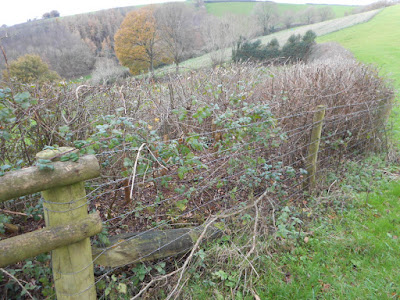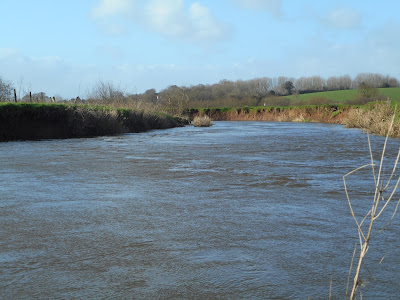With
the encouragement of my lovely aunt in Norway (thank you, lovely aunt) and with advice from Alan and Cathy who present us with a beautiful handmade calendar each year (thank you, Alan and Cathy), I’ve put together a calendar for next year (2021) using my photographs of Devon countryside.
Because
some of the recipients will be Norwegian, I've also prepared some background information about the pictures - such as more about their locations, and what was happening in Britain at the time (given that this has been a fairly extraordinary year). I was going to mail it out with the calendars but then I thought that this might steal the limelight from my aunt when she donated calendars to her friends as Christmas presents, and I couldn't work out how the heck to please both the British and the Norwegian recipients without either patronising people or boring them. So I decided to put the information here instead (and direct people here from the calendar) so that people can read it only if they want to and British people will understand why I'm including a lot that's obvious to them. I hope you'll be interested even if you don't have a calendar.
Phew.
Some
of the pictures have already been published in this blog but others are new. The
links refer to posts about the walks where the pictures were taken, and if you
follow them you might also come across the pictures that got away (as recounted
below).
The
stories behind the pictures
Devon
is in South-West England. When I arrived here in the 1970s, it was rural and
unspoilt and different from the rest of the country, but its population has
doubled since then and much has changed. It took the Lockdown in spring and summer to remind me what the area used to be like.
Frog is who I’m married to (and I bear no responsibility for
his nickname since he was given it before I met him). Ellie is a ten-year-old
Springer Spaniel/Border Collie cross who’s lived with us since she was a puppy.
She’s very bossy and very energetic, and barks a lot which drives Frog
demented.
Pictures
January to October were taken in 2020, December in 2019 and
November in 2017 (as I lost two years of pictures after a
technology crash).
I don’t
tweak my photographs (eg adjust their colour or contrast) as I think that’s
cheating, but I have uprighted them where necessary (as I have a tendency to take
wonky pictures). I don't crop them either as a rule but in the calendar they are cropped slightly to make them fit the shape of the pages. What you see below are the uncropped versions.
Front cover
Here
you can see Frog and Dog (a speck in the distance) walking the towpath of the
Grand Western Canal, a Local Nature Reserve a few miles from home. It’s May and
the weather is glorious, as it has been ever since the start of Lockdown six
weeks earlier, with the sky clearer, the air sweeter and the silence deeper
than anything I’d experienced for decades, if ever, in the UK.
See
‘Five on Friday’
January

I
was going to include what I thought was a gorgeous picture of a translucent
greeny-grey sea but Frog said it was much too gloomy for the start of the
calendar. I decided that he was probably right so here instead is a picture of
gorse on the same walk.
Even
though it was a bleak day there were still splashes of colour, such as catkins
and toadstools in the woods and this gorse out on the cliffs.
As
the English saying goes, ‘When gorse is out of flower, kissing’s out of fashion’,
which means of course, that gorse is always flowering, even in mid-winter, and
I have pictures of gorse flowers peaking through snow. We didn’t have any snow this
winter however, not even a flurry as far as I can remember.
We’re
on the East Devon coast, our nearest seaside and one of our favourite locations
for walks (which will become obvious as this calendar progresses).
See
‘Winter into spring’
February
This
is the River Culm and I’m sitting on a squelchy island which the dog and I have
reached across a spit of gravel. We’re in a popular National Trust park (the NT
being a charity that protects countryside and historic buildings) and this was the
only place I could find to be alone.
I’m
transfixed by the rushing water and hoping that the spit will still be there
when we want to get back to the mainland. The river is in spate and, if it’s
raining upstream, levels could rise quickly.
(We
did make it back but one of my feet slipped off the spit and my boot filled
with water. Bother.)
See
‘Winter into spring’
March
This
is the lane that runs along the spine of the hill above the house.
All
Devon lanes look the same – hedged, twisty, narrow, muddy, up and down – and if
you lose concentration when driving it’s easy to become disorientated: ‘Where
am I? Where am I going?’ On foot, as I am here, it’s not so bad.
You
might also realise as you progress through this calendar that through-routes - roads,
footpaths, avenues, canals, rivers – are something of an obsession of mine.
(Actually, I didn’t realise it myself until I got to the end.)
This
is a tiny patch of ancient woodland a twenty-minute climb through fields from
home. I call it my sanctuary as only a couple of other people (friends and
neighbours) visit it and they tend to stick to its other end. So it’s just me here
and wild nature, something that’s very hard to find anywhere in the UK.
At
bluebell time, like now, the wood is completely magical. Ellie however is
immune to magic. She hurtles to and fro chasing squirrels (and getting into my
pictures).
See
‘Pointing and shooting’
May
Branscombe
beach, East Devon.
During
the Lockdown we were allowed out once a day for exercise but it wasn’t at all
clear whether or not we were allowed to drive somewhere for that exercise. Frog
and I had heard on the local television news that so long as your walk was longer than your
drive it was OK, so we took that as our mantra, and made the 45-minute drive
here on this beautiful day as a birthday celebration, stopping off to do some food
shopping as an additional excuse and walking for two hours on the cliffs.
There
were few other people around however, which was a treat but not normal and made
us wonder what the rules actually were.
June
Once
more Frog rejected my first picture choice (watermeadows, ruins) as too gloomy
but as the weather had now broken it was hard to find a June picture that
wasn’t gloomy. This picture of abandoned lime kilns on the Grand Western Canal,
on the same walk as that of the rejected picture, makes up for its gloominess
with atmosphere (in my opinion – but I haven’t shown it to Frog yet).
We took a new route on this walk and passed a dramatic quarry and dramatic quarry buildings which looked like a Spanish fortress. I would have liked to include in the calendar one of the pictures I took of these but decided they weren't representative of the British countryside - but perhaps they are. Perhaps I should show it as it really is, not just the pretty bits.
July
Nor
are there any blue skies in my July pictures, so you’ll have to make do with
this one, taken from the top of some East Devon cliffs.
It
was a long steep climb to get here and when I arrived the sky seemed to be
exploding towards me.
The landowner here farms for wildlife, not just 'organically' (without chemicals), and on this walk I saw birds, wildflowers and butterflies I've never seen before.
See
‘Living and learning on the Jurassic Coast’
The
sun has come out again, it’s hot and I’m sitting on the hill behind the house.
Everything glows with colour and light, and I have the sense that this is the
summer at its peak.
Although we have a good network of public footpaths in England, there is no 'right to roam' in the countryside except in special places like national parks. One of our farming neighbours however allows me free access to their land and I feel grateful every time I'm out in it, which is most days. I don't think Frog and I would have stayed here so long (40 years) without them.
We’re
by the sea again here in the 'undercliff’, an area of
wilderness created by landslips. It’s only the beginning of the month, but
already the wildflowers are disappearing and the berries are taking over.
John Fowles wrote a novel (made into a film in 1981) called The French Lieutenant's Woman and as far as I can remember much of it was set in the undercliff a little further east from where we are here. However, when I took my old copy down from the shelf the print was so tiny I couldn't read it, so I can't tell you any more. Frog and I took a walk there a few weeks later but didn't feel prepared for the full route as it's four hours without exit or access to phone reception and the list of dangers on the noticeboard was daunting.
We’re
on our way back after a day out which included a visit to a beach (rendered
almost inaccessible due to recent landslip and hence deserted) and what turned
out to be our last swim of the year in the sea.
See
‘An anniversary day out’
This
is another second-choice picture, as the first one – of a disused chapel and
graveyard – was again pronounced too gloomy by Himself.
I
was feeling gloomy (The season? The worst of virus restrictions without the
best? A creative hiatus?) and had resolved to do new things, including
returning to the National Trust park which I’d left alone during Lockdown as it
had bulged with visitors.
The
park was still busy and I walked as quickly as I could the couple of miles to
its far side, sitting to eat my sandwich all alone (except for Ellie) in the
aforementioned graveyard, propped against a tomb. I thought it was a beautiful
peaceful spot, not gloomy at all, and it fed my soul.
This
ploughed field and typical Devon view later on in the walk were also healing
however, and Frog preferred them. Note Devon’s distinctive red (sandstone)
soil.
See
‘Autumn feasts’
I’m
at the National Trust park again, in a newish avenue (newish in that I remember it being created) which inspires the
photographer in me at all seasons.
They say you can tell the age of Devon hedgerows by counting one hundred years for each species of tree in it, and the last one I counted had eight. The trees in the planted row (the one on the left) are all the same - beech, as far as I remember - but the scrubby wood on the right is probably a lot older and therefore better for wildlife, even if less photogenic.
The
view south from under a beech tree on the hill behind the house, and Ellie
looking wistful.
Behind
the line of hills in the distance is the sea. The dip in the line straight ahead is
Branscombe, which features in May. To the right (if you could see it) is
Dartmoor National Park, and behind is Exmoor National Park (neither of which
has found its way into this calendar – another year perhaps).
We’re very lucky
to live here. It’s still beautiful.


















